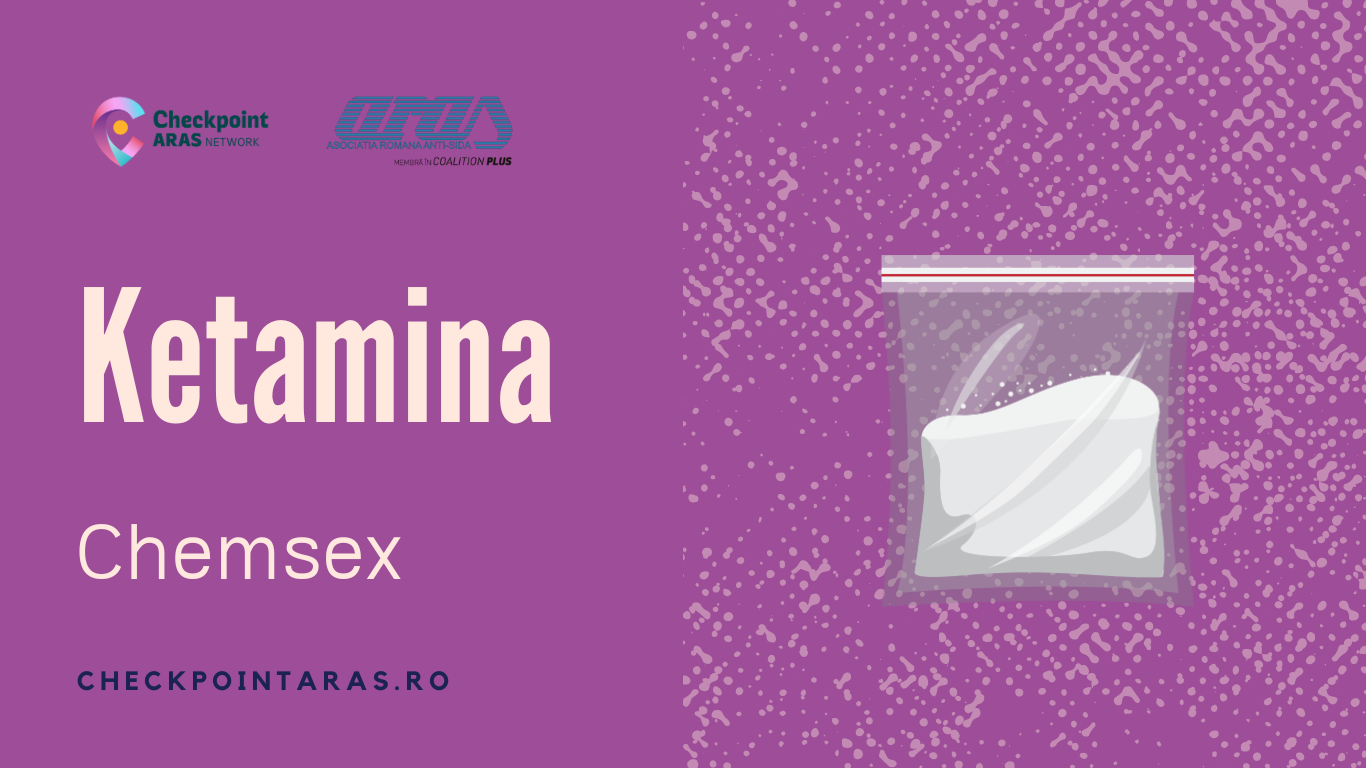Ketamine is known for its anaesthetic, analgetic, antidepressant and anti-inflammatory effects with reported side effects including increased salivation, increased heart rate, systemic arterial pressure and intracranial pressure. It also has psychoactive effects, including sedation, vivid dreams, dissociation (disorientation over space and time), psychomotor disturbances, memory and cognitive impairment and hallucinations, which seem more probable or intense if a person is suffering from any psychiatric issues.
As a psychoactive substance, it comes as a colourless, odourless and tasteless liquid and, more frequently, as a white powder or tablets.
It can be mixed with non-alcoholic drinks, snorted (sometimes with the use of bullets to measure the doses in order to avoid overdose), swallowed (bombing), mixed with water and injected into the muscles, or delivered rectally through booty bumps. Its effects last 45 to 90 minutes, if snorted, and up to 3 hours, if swallowed or injected. There is no known antidote for ketamine.
Its street names include K, Special K, Vitamin K, Ket, bump of K, Kiddy/Techno smack.
Effect
In chemsex, ketamine is often used to complement the effects of other substances. Its effects vary depending on the body weight, tolerance, its combination with other substances, the dose quantity and the potency of each individual batch. It confers:
- a feeling of floating, detachment and relaxation, making it easier to have hard sex and practices such as fisting
- a sense of euphoria, happiness and peacefulness
- sexual arousal and disinhibition
Its harmful effects include
- dysfunction of the urinary tract
- difficulties in erection and ejaculation
- dizziness, nausea and vomiting
- ataxia (loss of motor control)
- nasal irritation
- extreme dissociation
- panic attacks
- bad trips with frightening hallucinatory experiences
Long term use consequences
Ketamine does not seem to cause physical dependence. However, it has been reported by some to cause psychological dependence and craving which, in some cases, can be dealt with by gradually reducing the amount of substance taken. Long term consequences of use or frequent use may cause:
- dysuria, painful haematuria and urgency of urination, kidney dysfunction
- K-cramps, i.e. intense and otherwise medically unexplainable abdominal pain
- psychotic disorders
- impairment in cognitive functions, including memory and learning problems
The effects in urination tend to cease when use stops, but there have been cases that surgery was needed.
A well-known side-effect of ketamine is the K-hole. That is a comatose condition, which is characterised by its dissociative and sedative effects.
Signs of an upcoming K-hole are:
- blurred vision
- intense hallucinations
- feeling detached from one’s body
- feeling that death is imminent
K-hole often ends without further problems apart from some disorientation, but in a K-hole one is vulnerable to sexual assault and accidents from falling etc.
Comedown symptoms include:
- feeling down and anxious
- memory loss
- flashbacks or visual hallucinations.
- Withdrawal symptoms on the ground of psychological dependence include anxiety, tremors, sweating, loss of appetite, nightmares and depression
Mixing with prescribed medication and other substances
- Mixing ketamine with depressants such as alcohol or G is quite dangerous, as well, as the compounded central nervous system, depression may result in severe respiratory and heart dysfunction.
- One should also be careful not to combine ketamine with crystal methamphetamine, cocaine, and ecstasy as these combinations may cause harmful heartbeat increase, confusion and risk of injury.
Harm reduction
Identifying the substance
As ketamine comes in powder, one should be very careful during chemsex parties not to mistake ketamine with any other powdered substance. Its regular dose is much smaller than that of other substances (e.g. cocaine or mephedrone). Similarly, ketamine tablets often have imprinted images on them and thus they may be mistaken for ecstasy.
Taking it slow
It is advised to begin with small doses and to be careful not to use frequently in order to avoid overdose and other health problems, as the ones described above.
Pre-existing conditions and mental health
Using ketamine when one is feeling depressed or anxious or dealing with mental health issues is dangerous, as the substance is likely to aggravate those mental states.
Furthermore, if heart, liver or high blood pressure have caused issues in the past, ketamine should be avoided.
Mixing with other substances
Ketamine should not be combined with central nervous system depressants. Stimulants may also cause unpleasant interactions, as the stimulants may counter the sedative effects of ketamine and vice versa. Consequently, the substances may reach highly toxic levels in the body.
Smoking
Smoking in combination with ketamine use may be dangerous. In cases of K-hole or motor inhibition generally, there is risk of fire or burns that may not be immediately felt due to the substance’s depressant and anaesthetic effects.
Injecting
Injecting ketamine is best avoided due to the fact that it may cause a number of blood, skin and other cardiovascular issues. Injecting in the veins should be avoided as it may be lethal.
Keeping an eye out for injuries
The pain relieving properties of ketamine may make hard sex easier and more pleasurable but they entail the danger of internal injuries that may not be realised on time.
Using with friends
Similarly, it seems that using ketamine on one’s own is not a good idea, especially in cases of bad trips or K-holes. Using ketamine with trusted people with whom one feels safe is important in order to get help or be protected from sexual assault in cases of K- hole. Generally, ketamine will lower inhibitions and thus increase the probability of taking risks that would not be taken otherwise, this is an additional reason to use ketamine in the presence of a trusted company.
K-hole
In case of K-hole, it is advised to move the person somewhere quiet with no bright lights and call the ambulance if they do not wake up. While a typical K-hole varies according to the amount of substance used, means of use etc., if its duration is more than 90 minutes, the people present should be vigilant, especially if respiratory difficulties are presented.
Seeking out a K-hole
In cases where ketamine is used in order to experience a K-hole, one is good to be sure of the safety of the environment and should be seated or lying in a place where it won’t be possible to suffer injuries from falling.
Being honest with medical staff
When dealing with medical staff in cases of ketamine overdose, one should be honest in order to receive the proper treatment. Likewise, a ketamine user is also advised to inform their physician if they are to have a surgery in order to receive the proper anaesthetic dose

